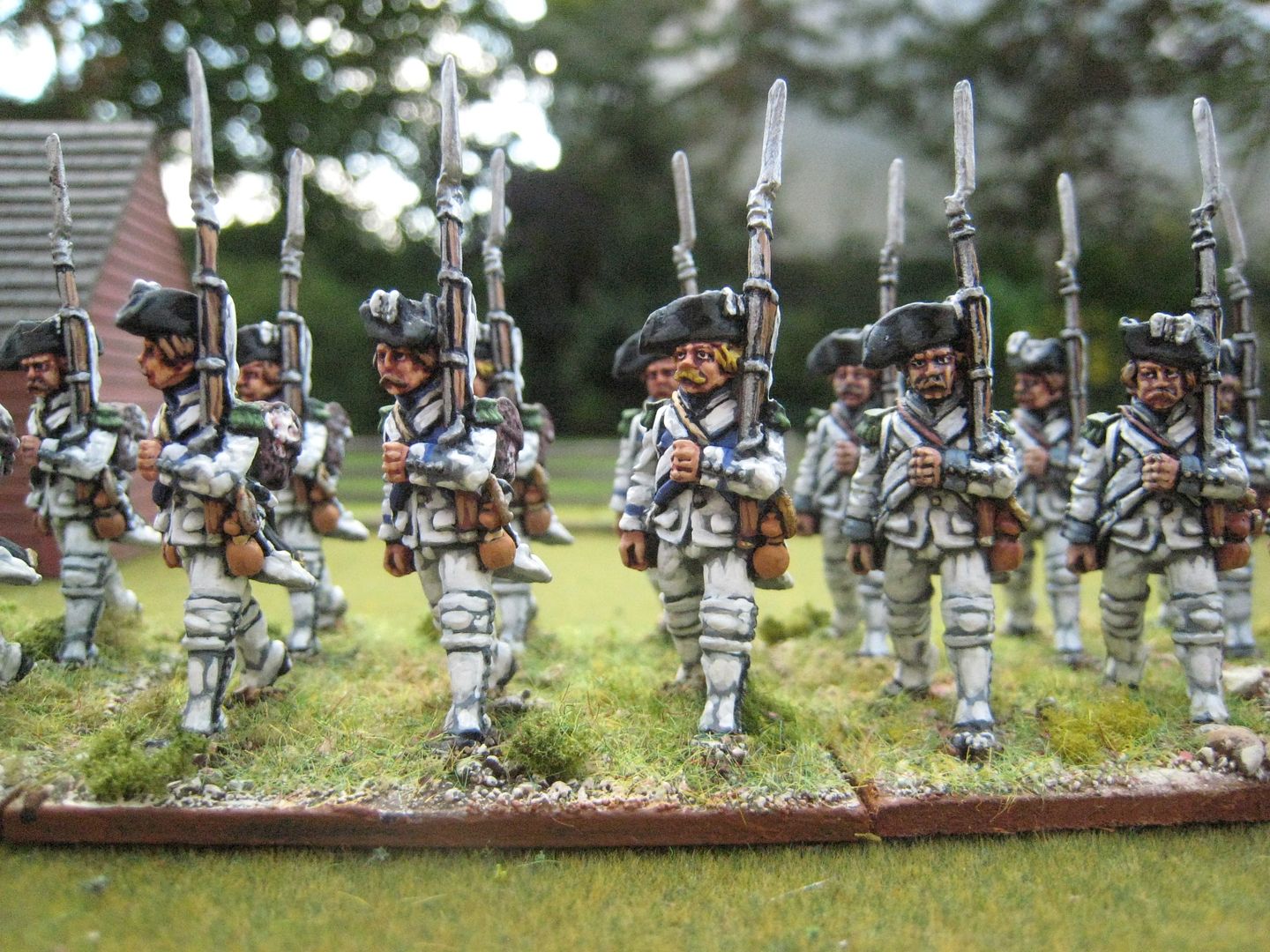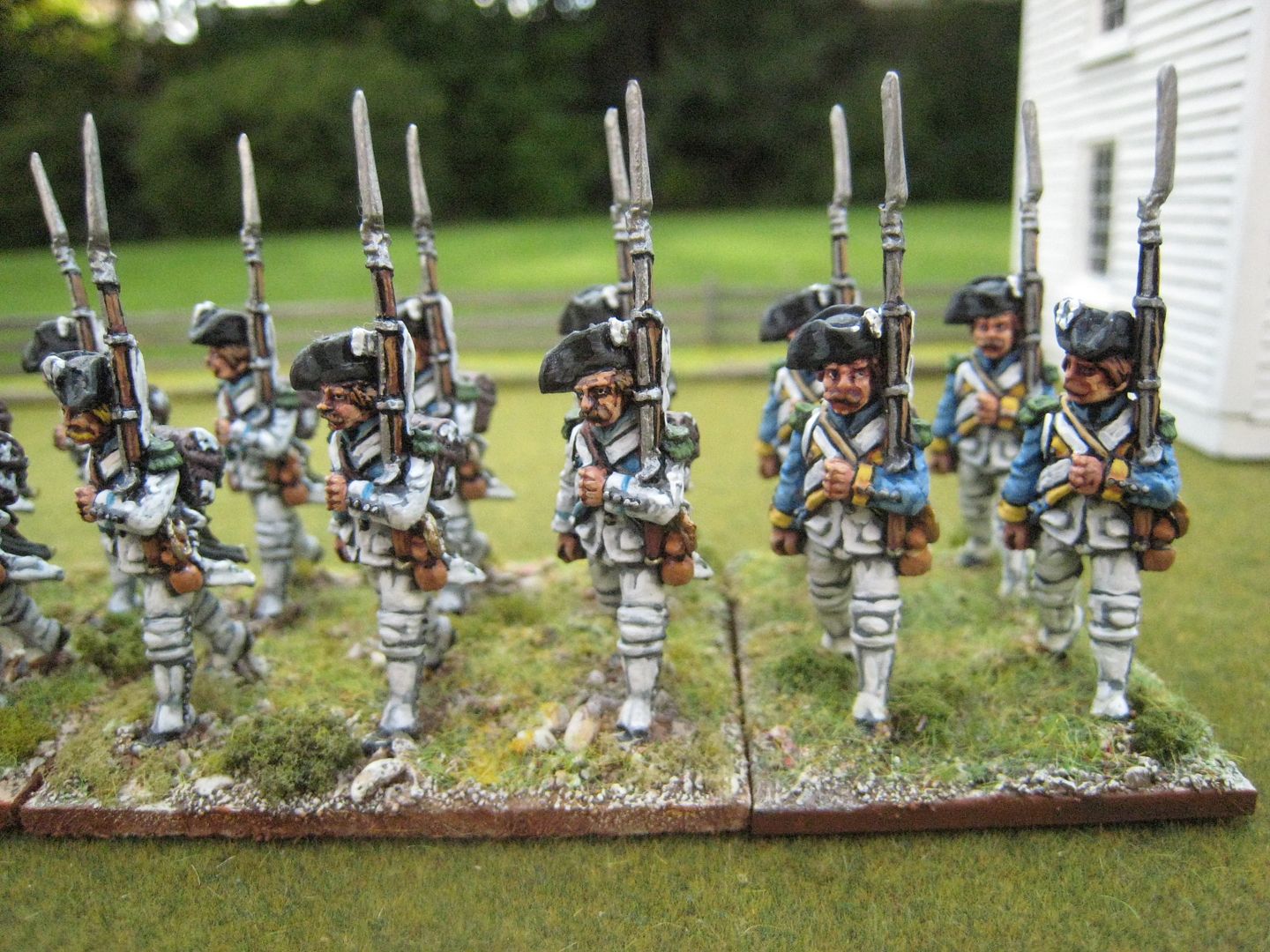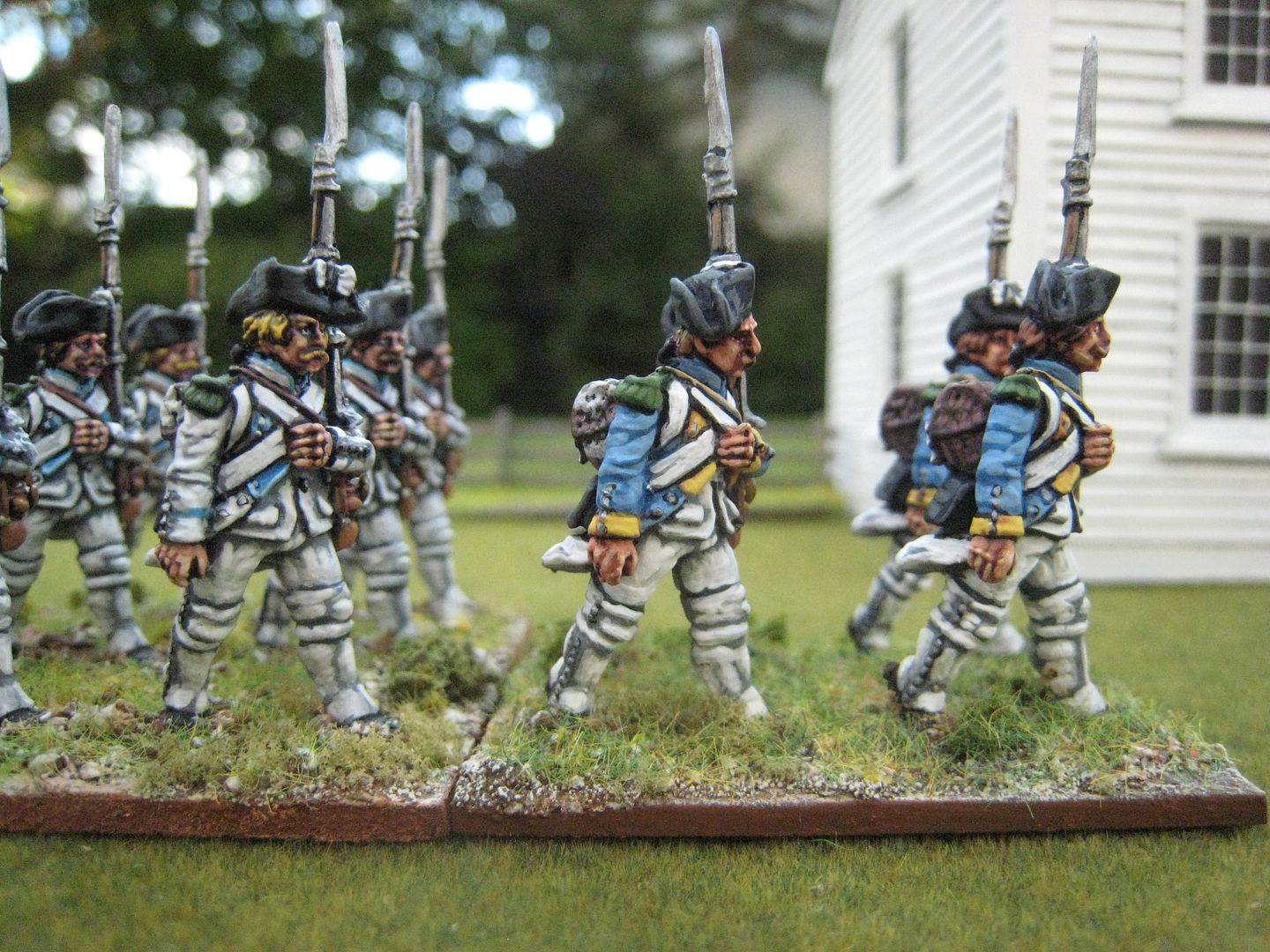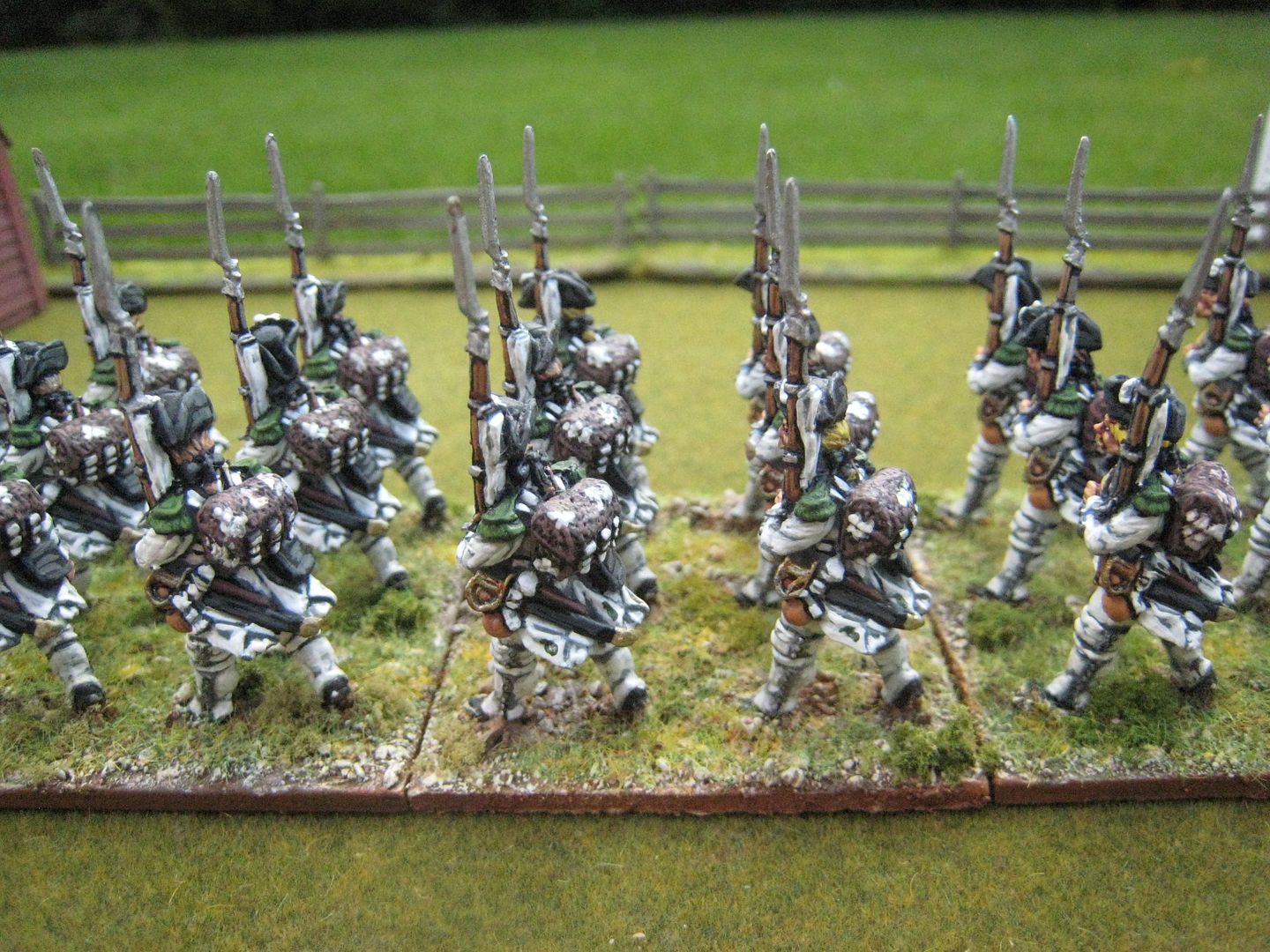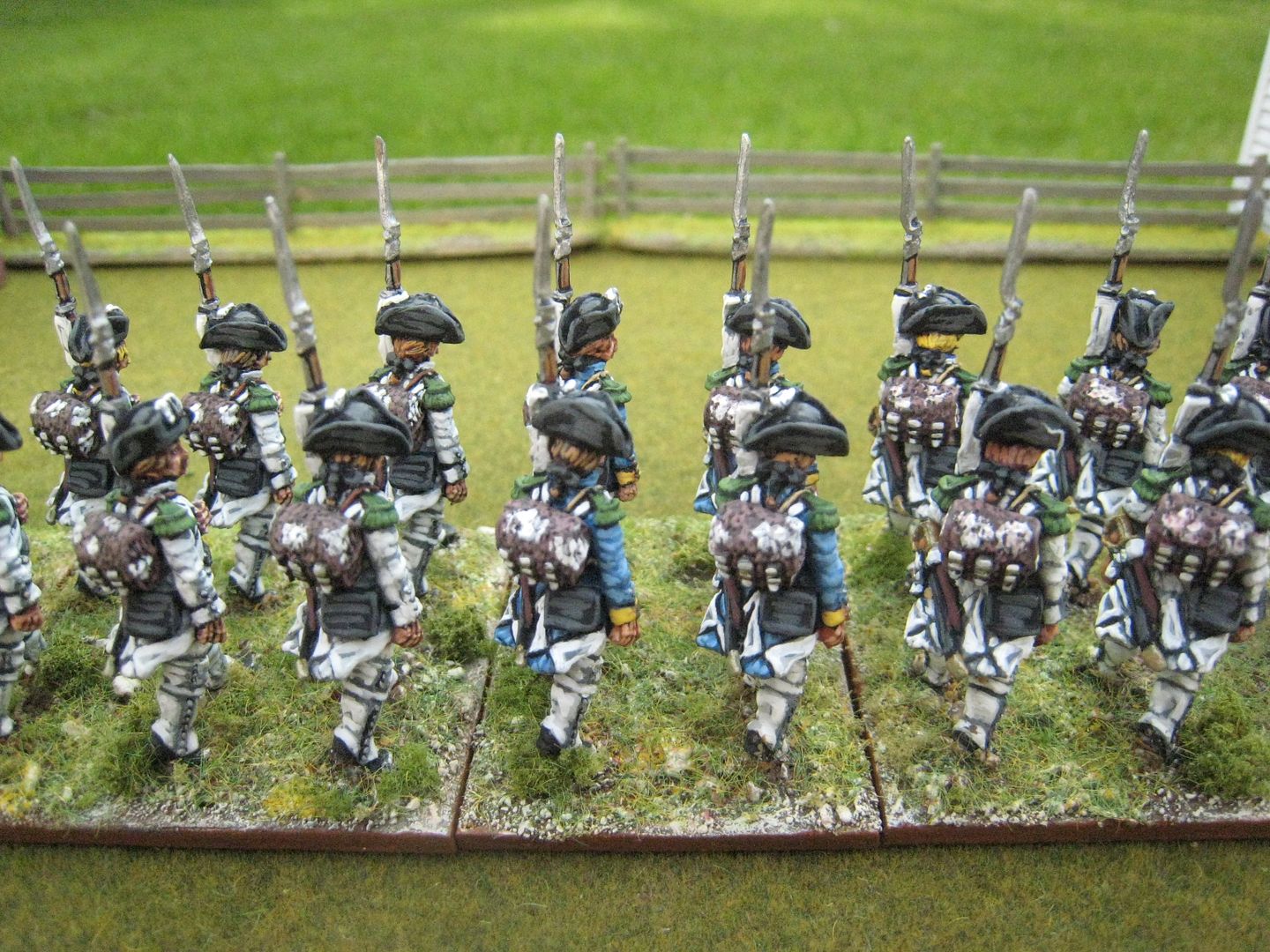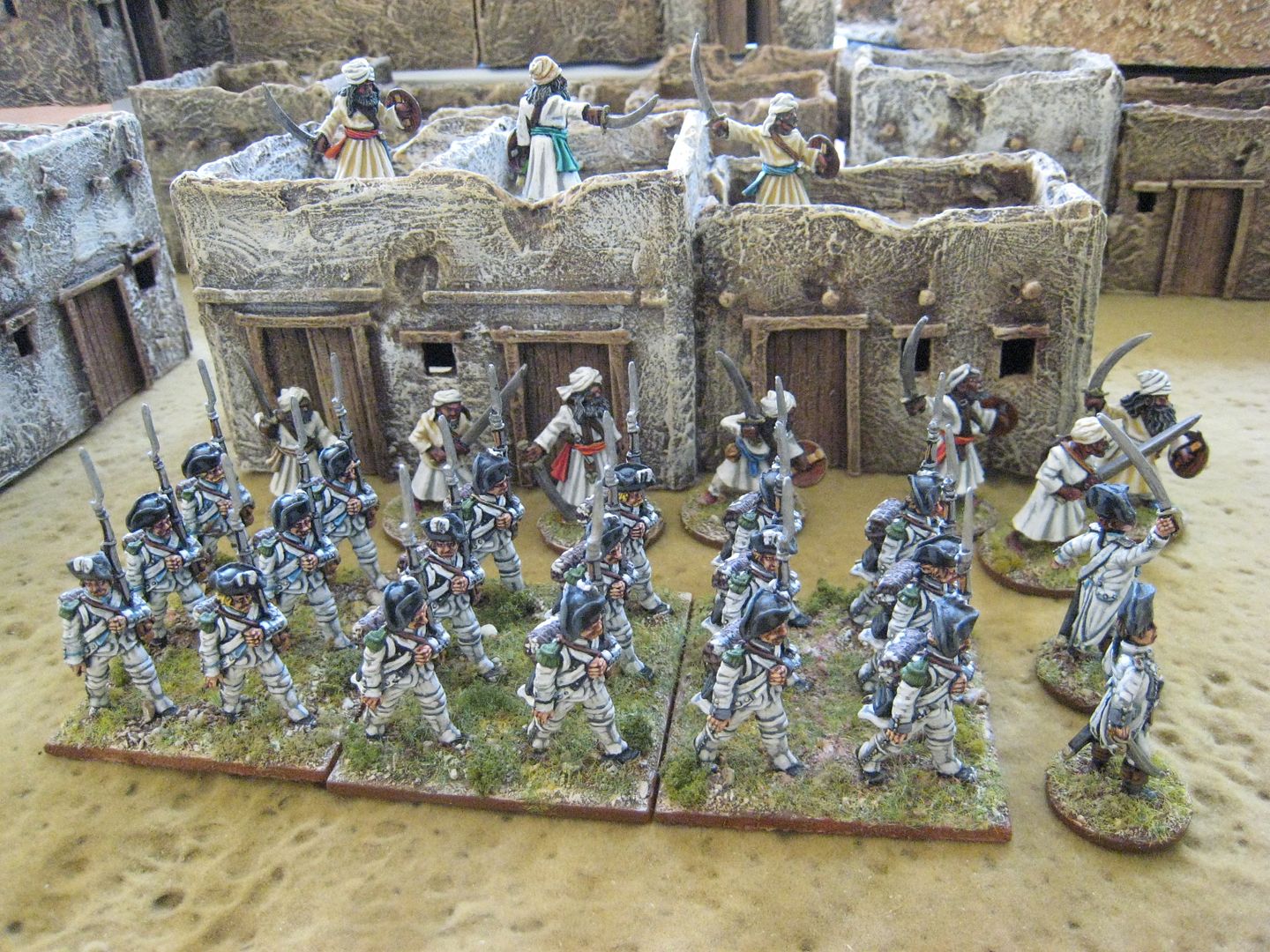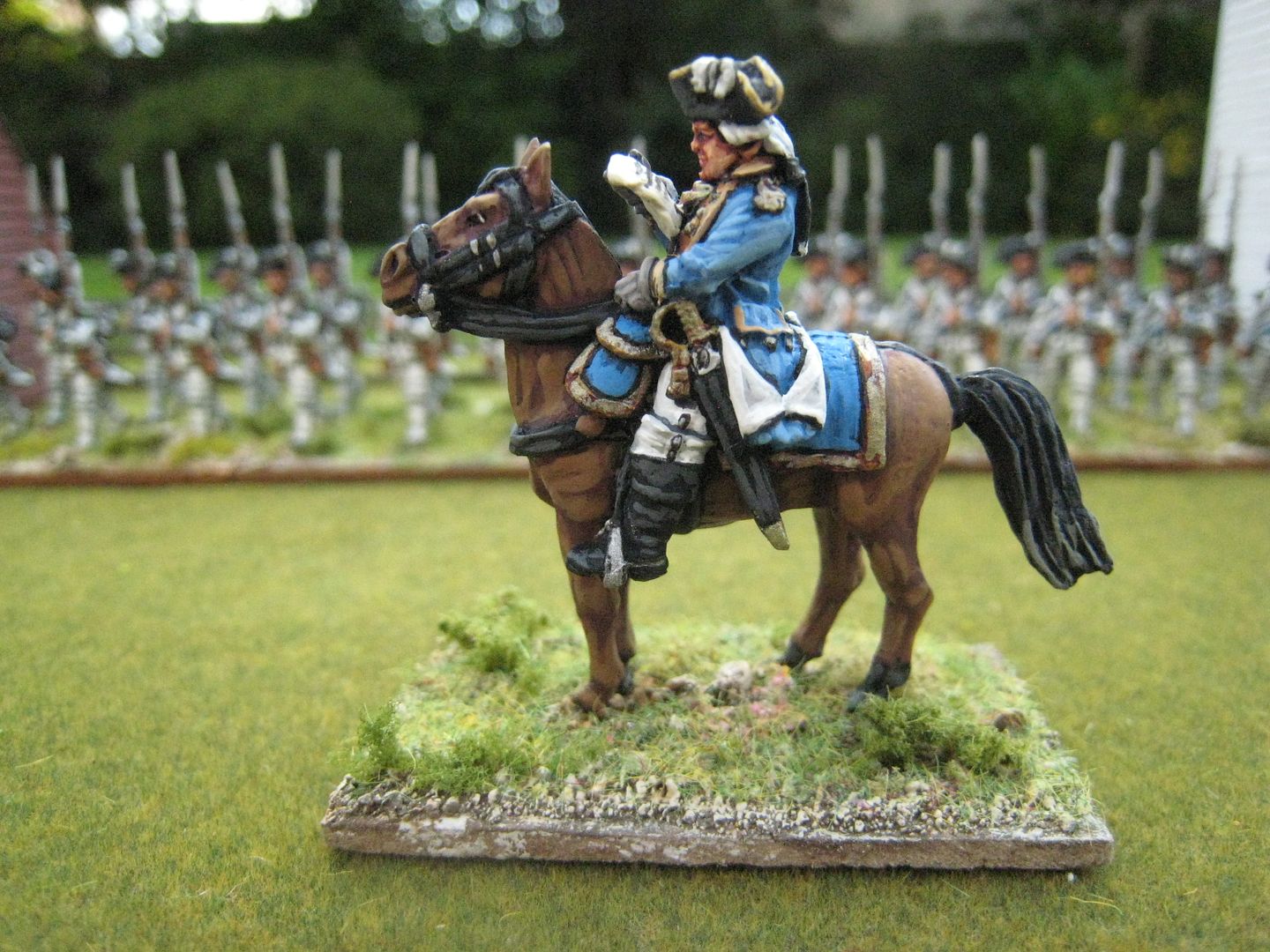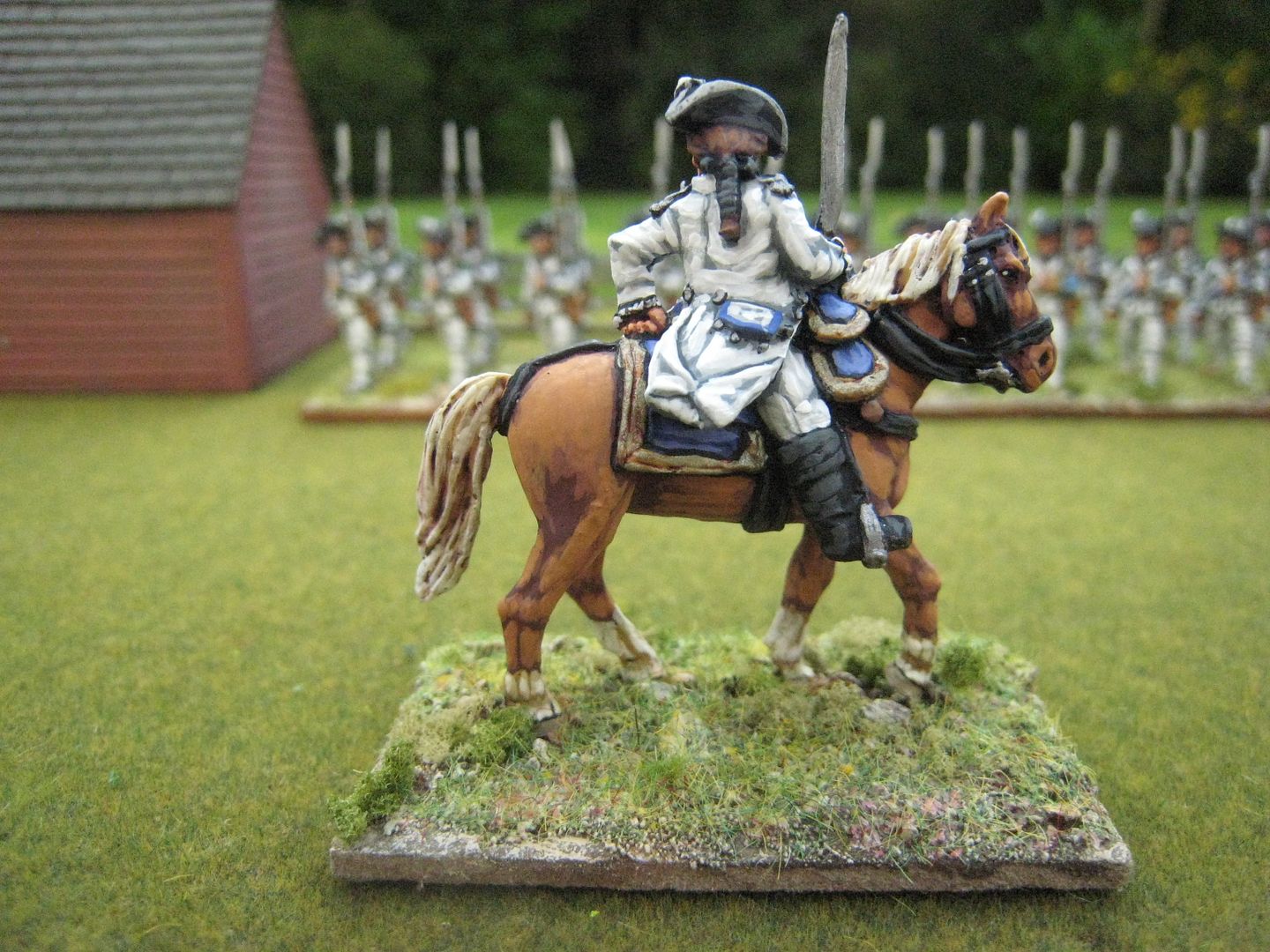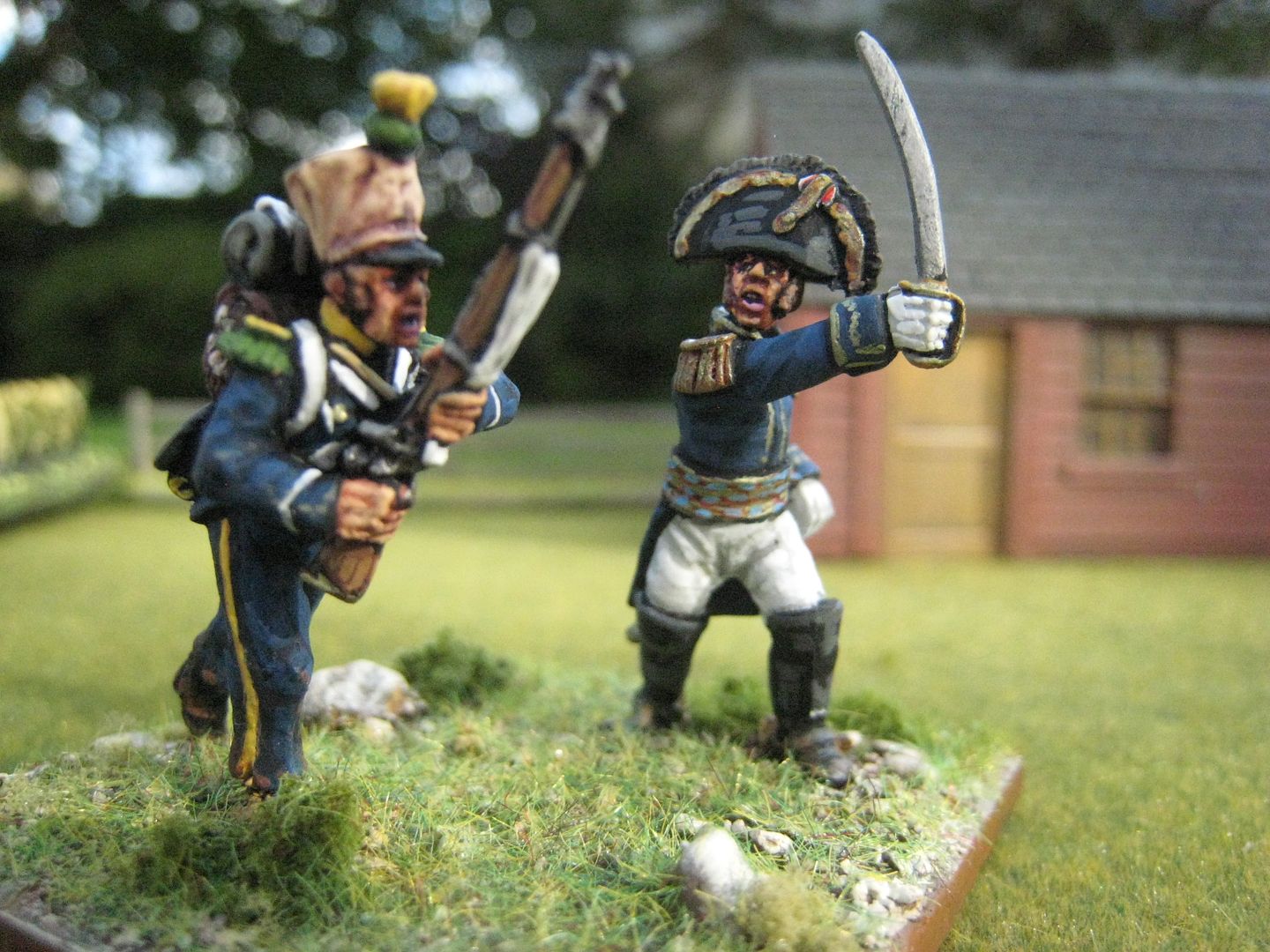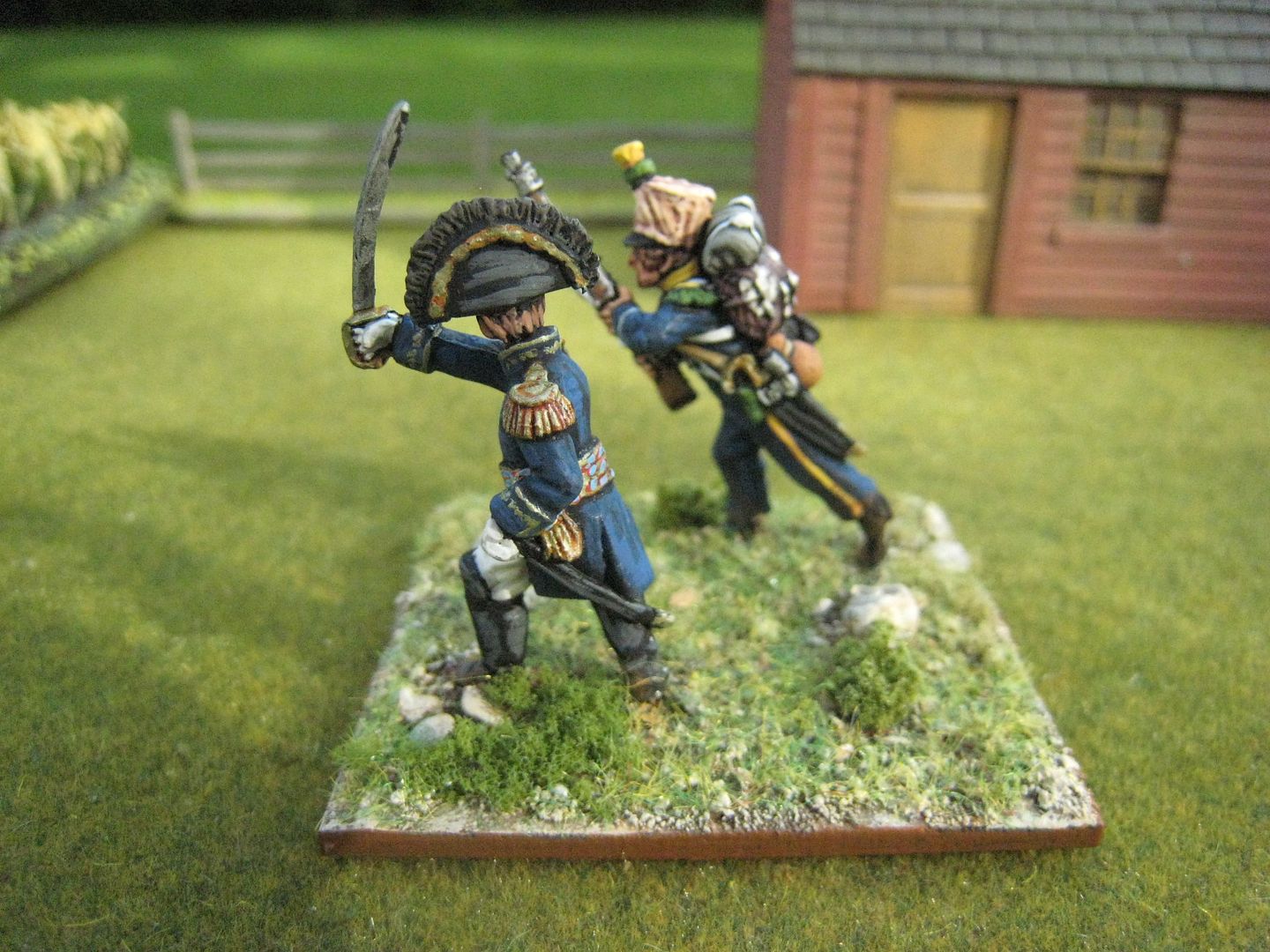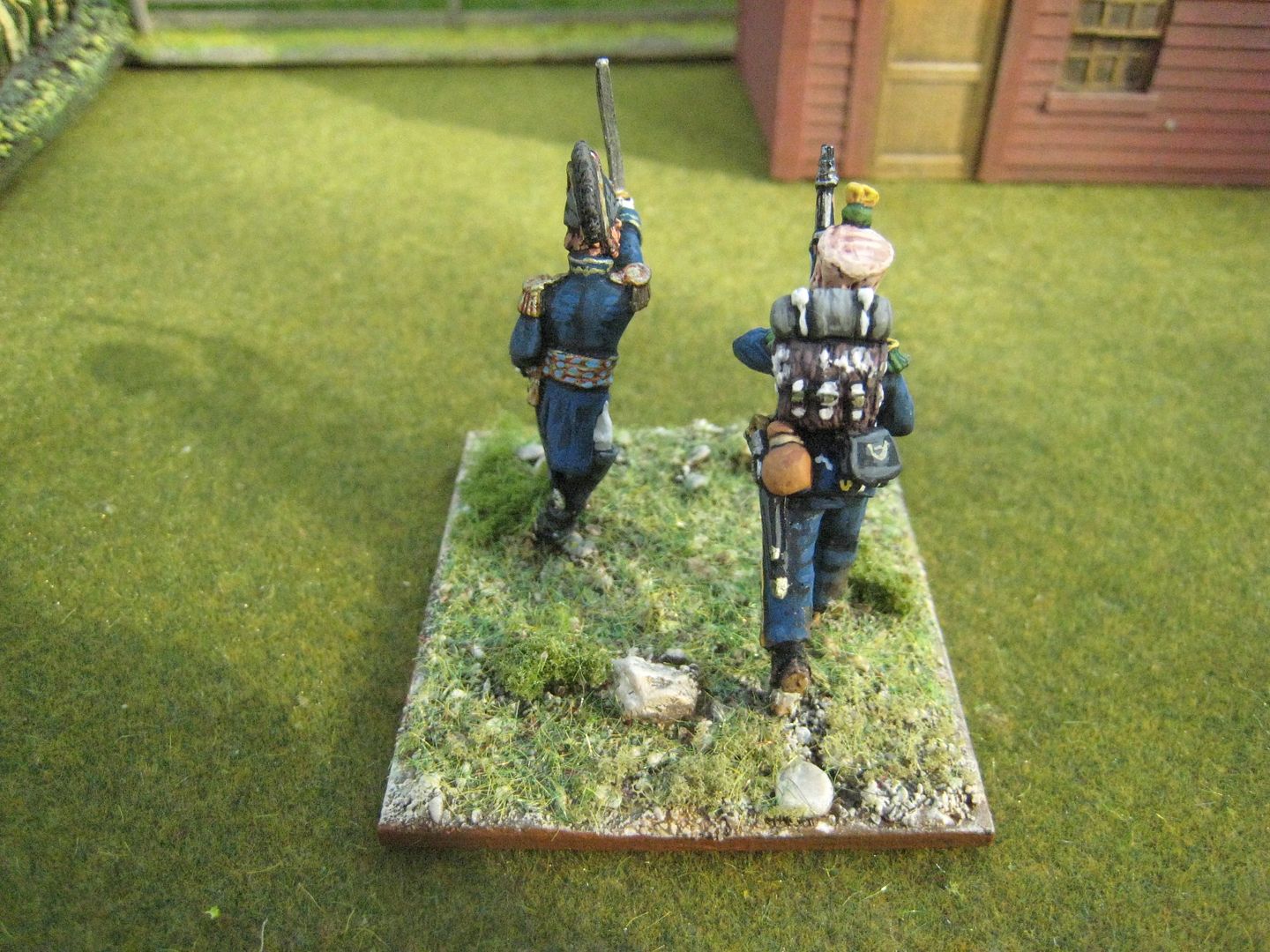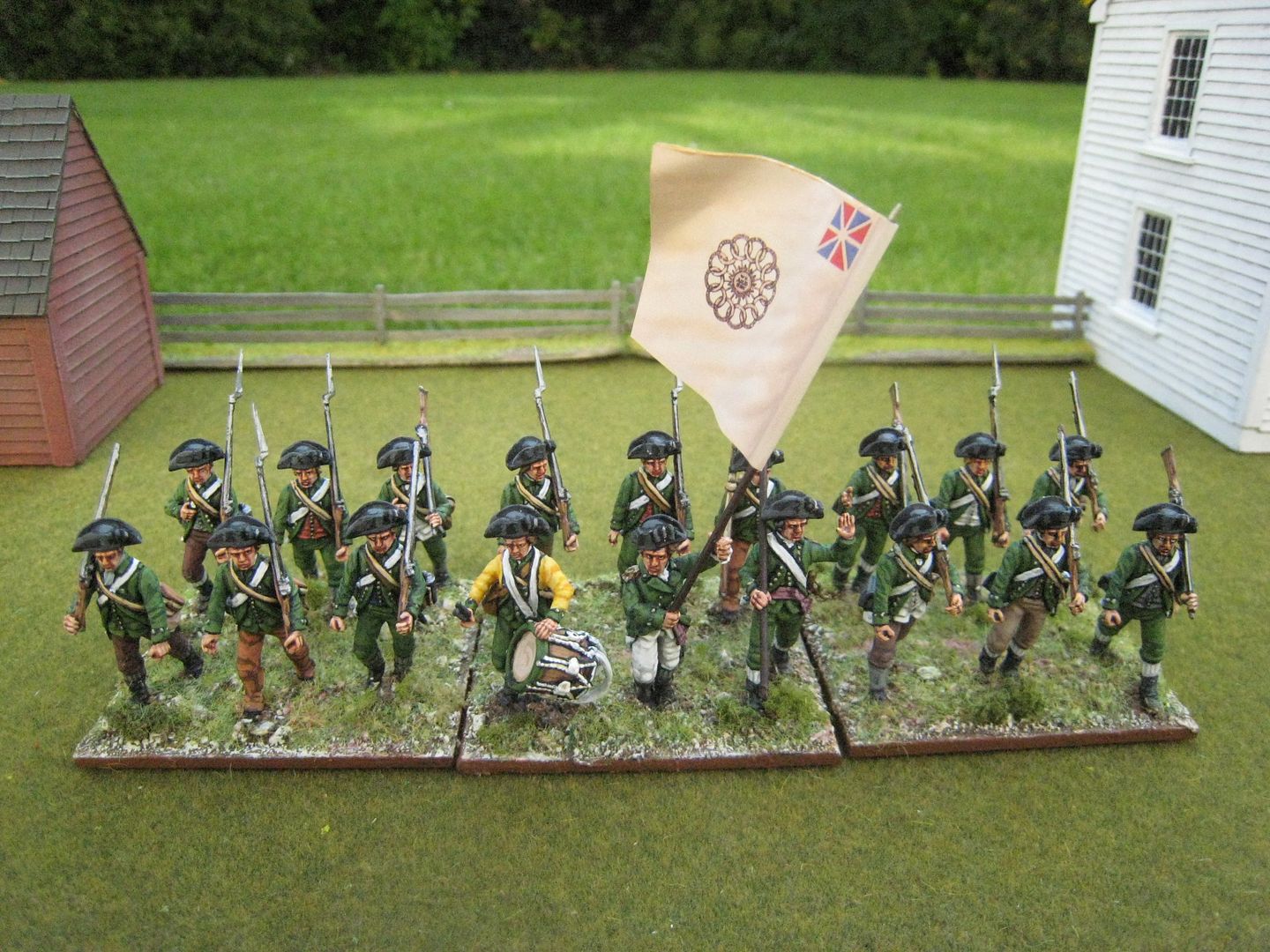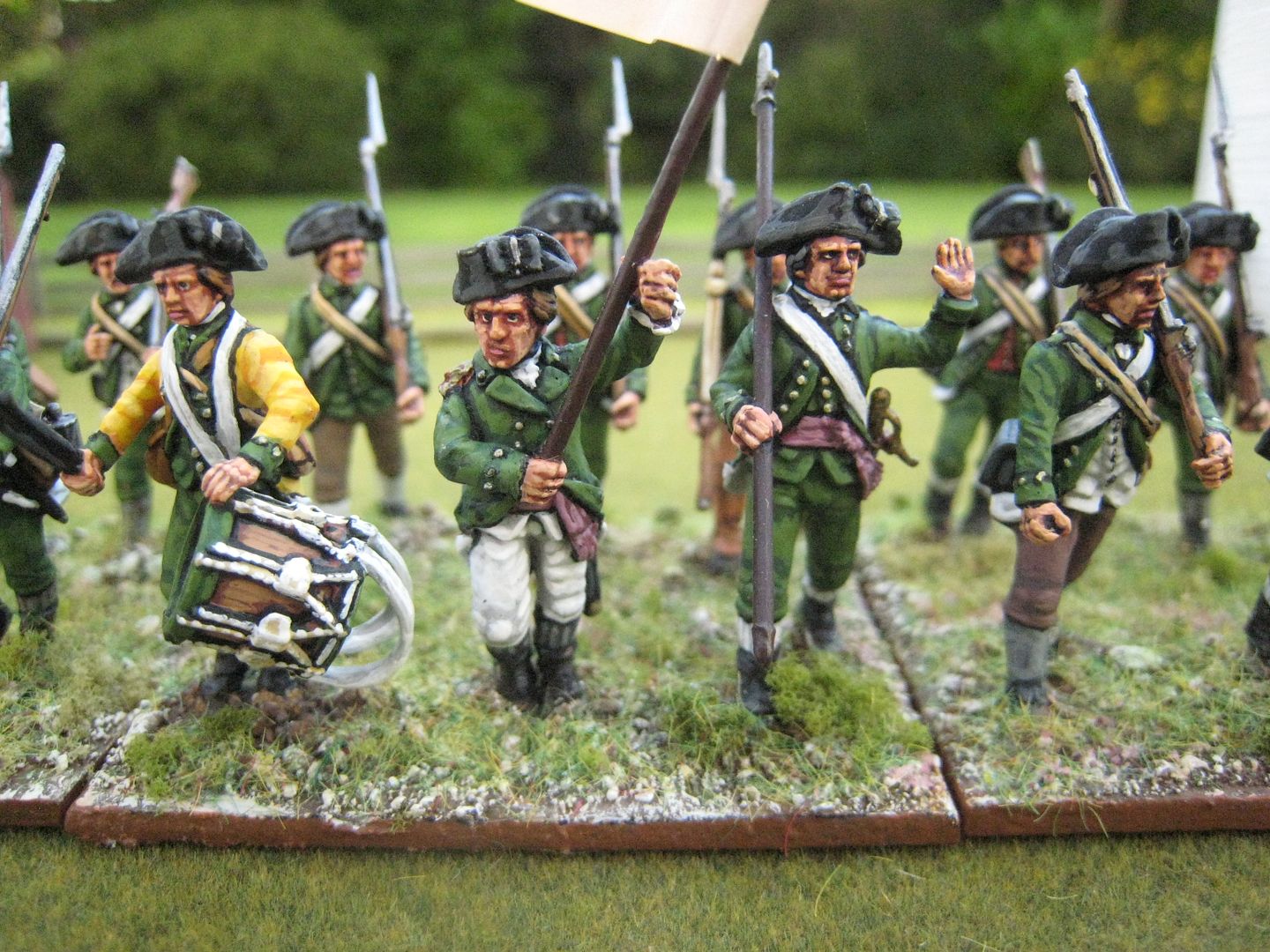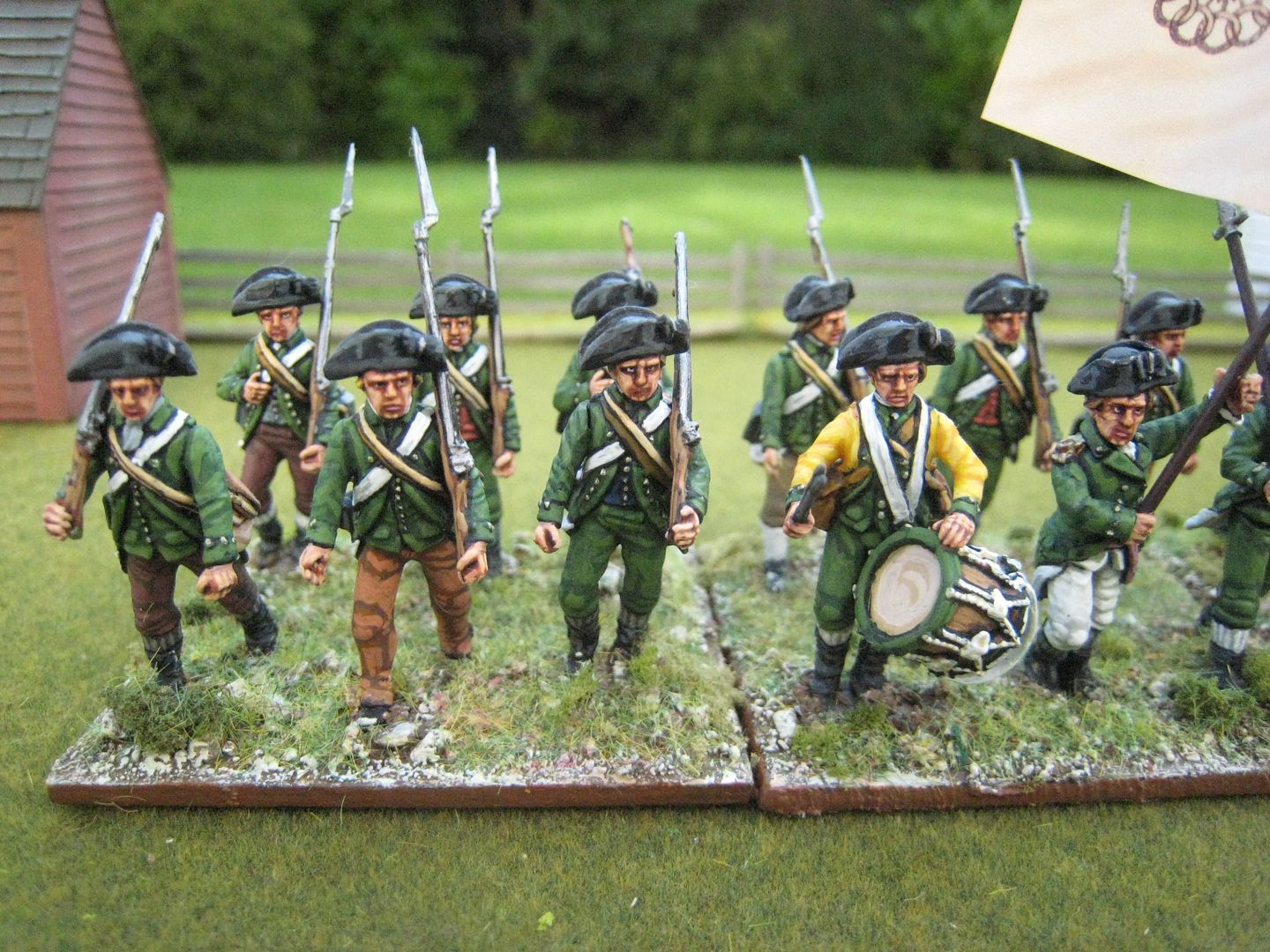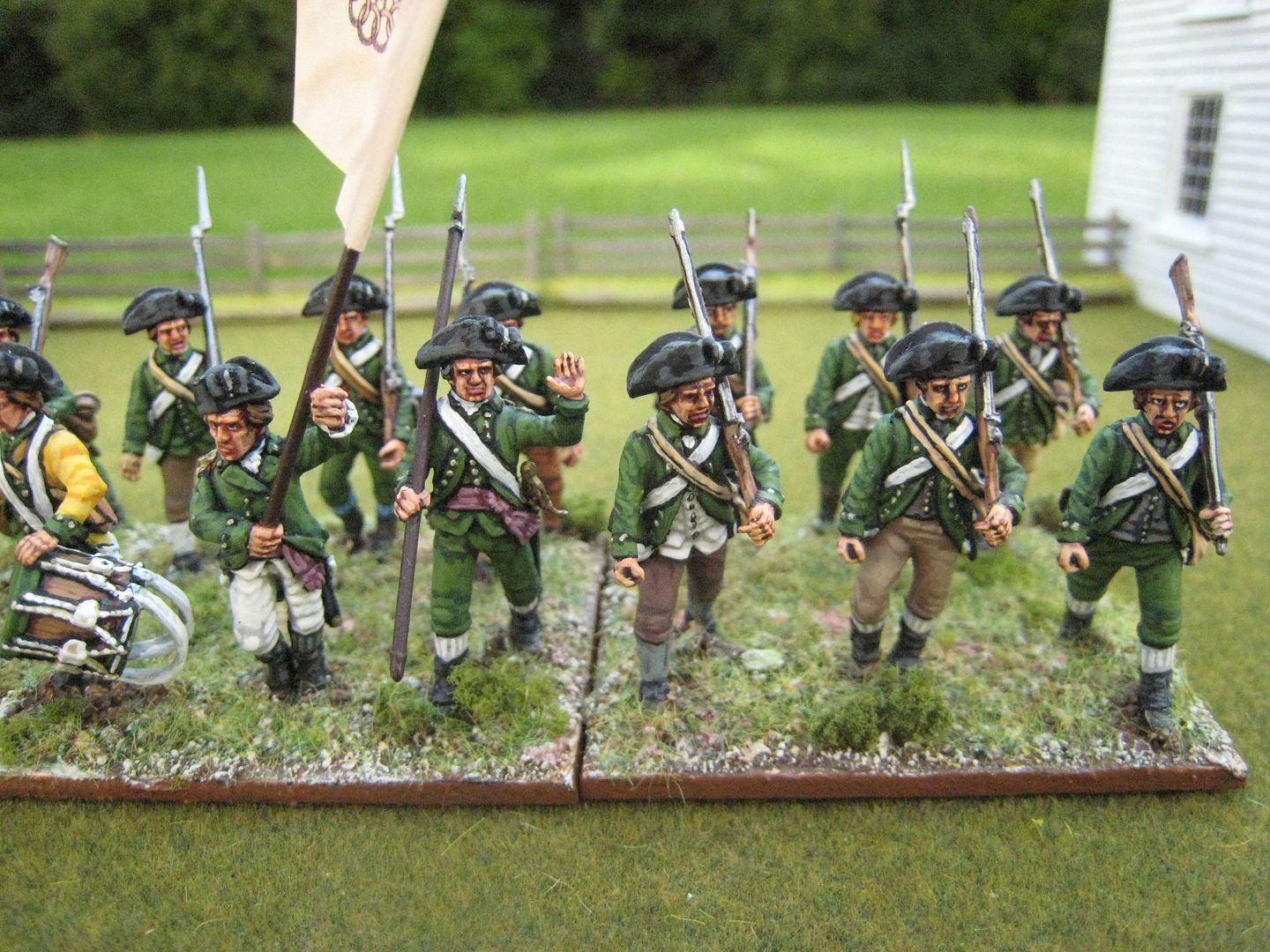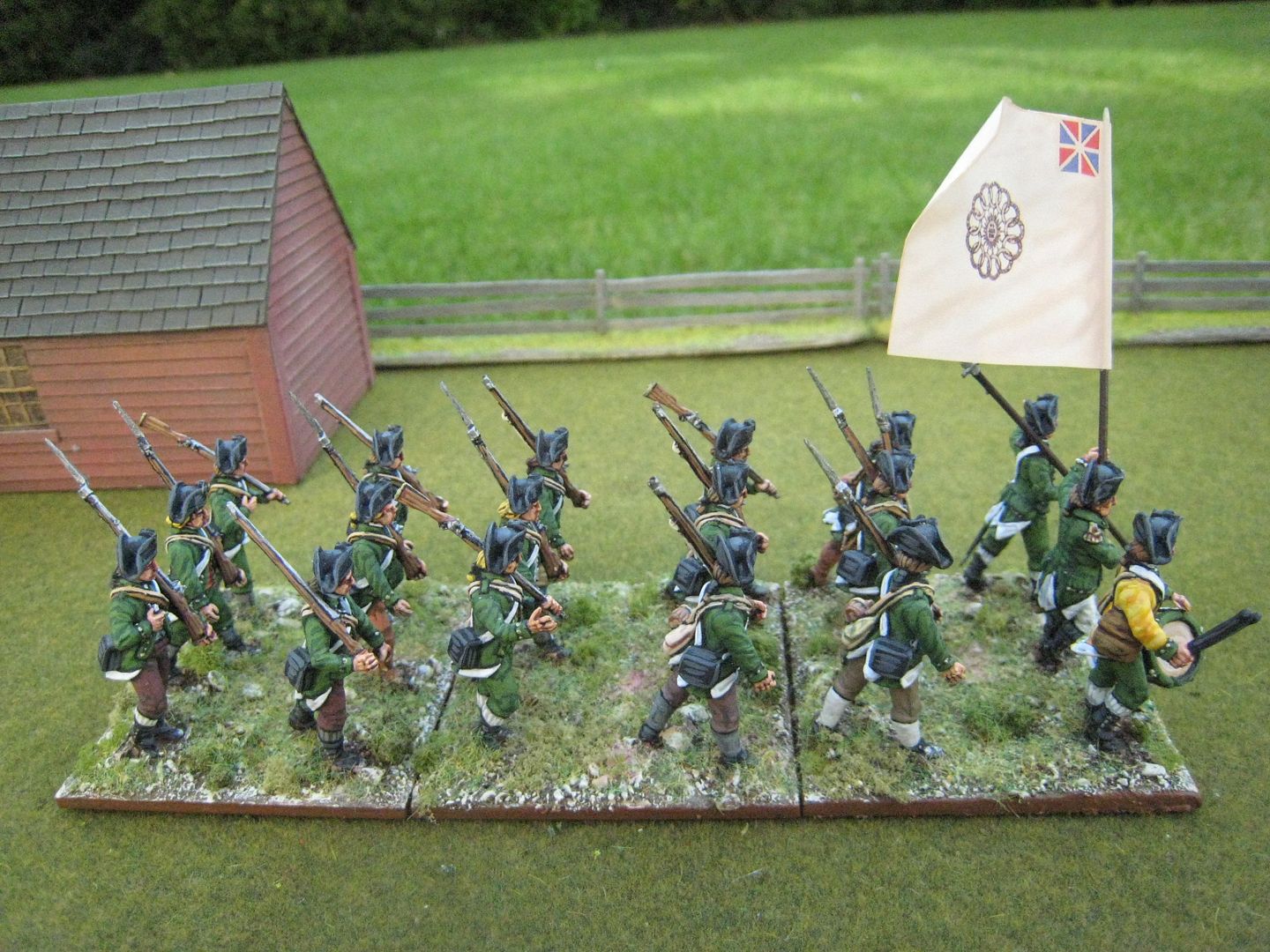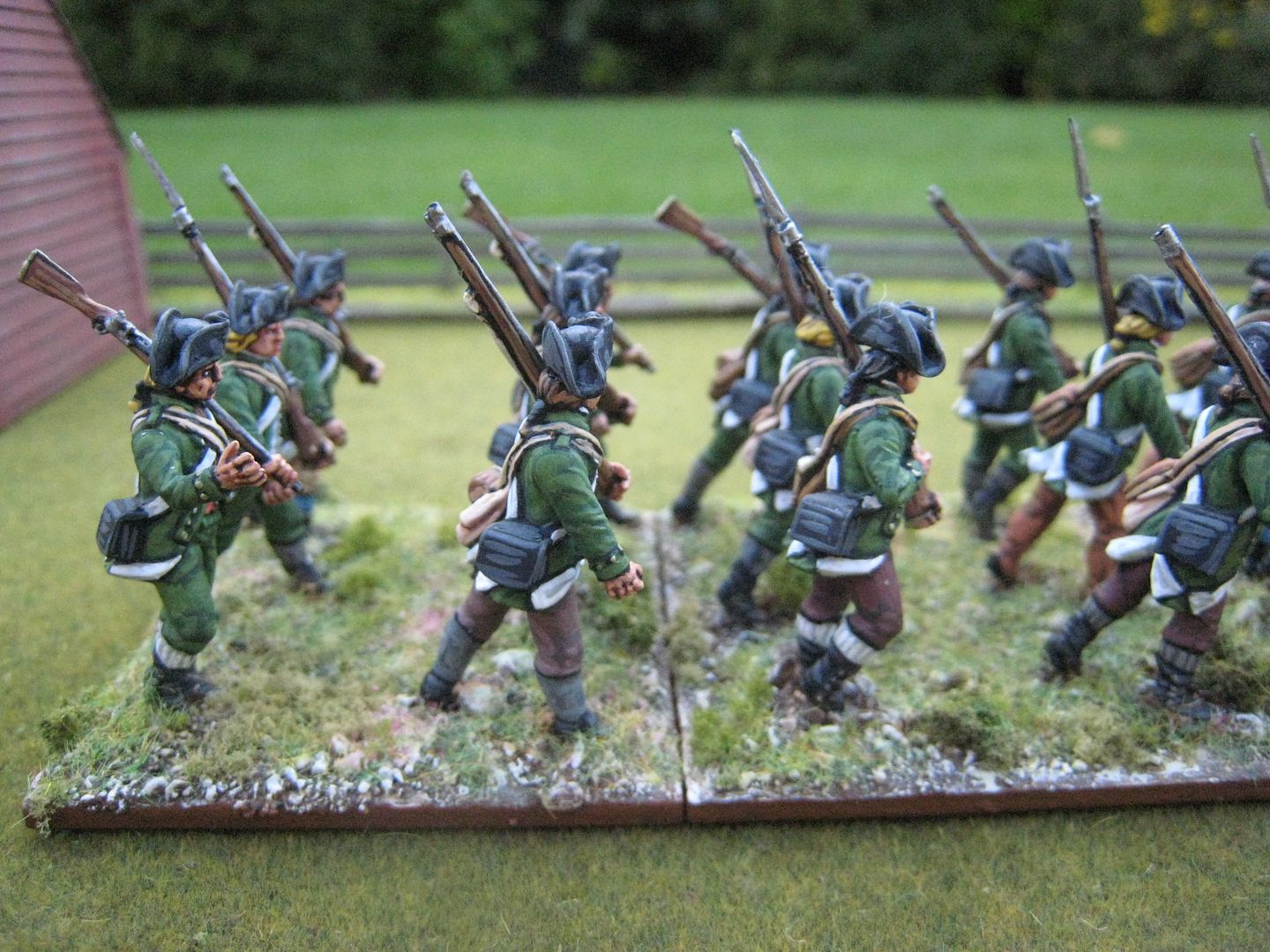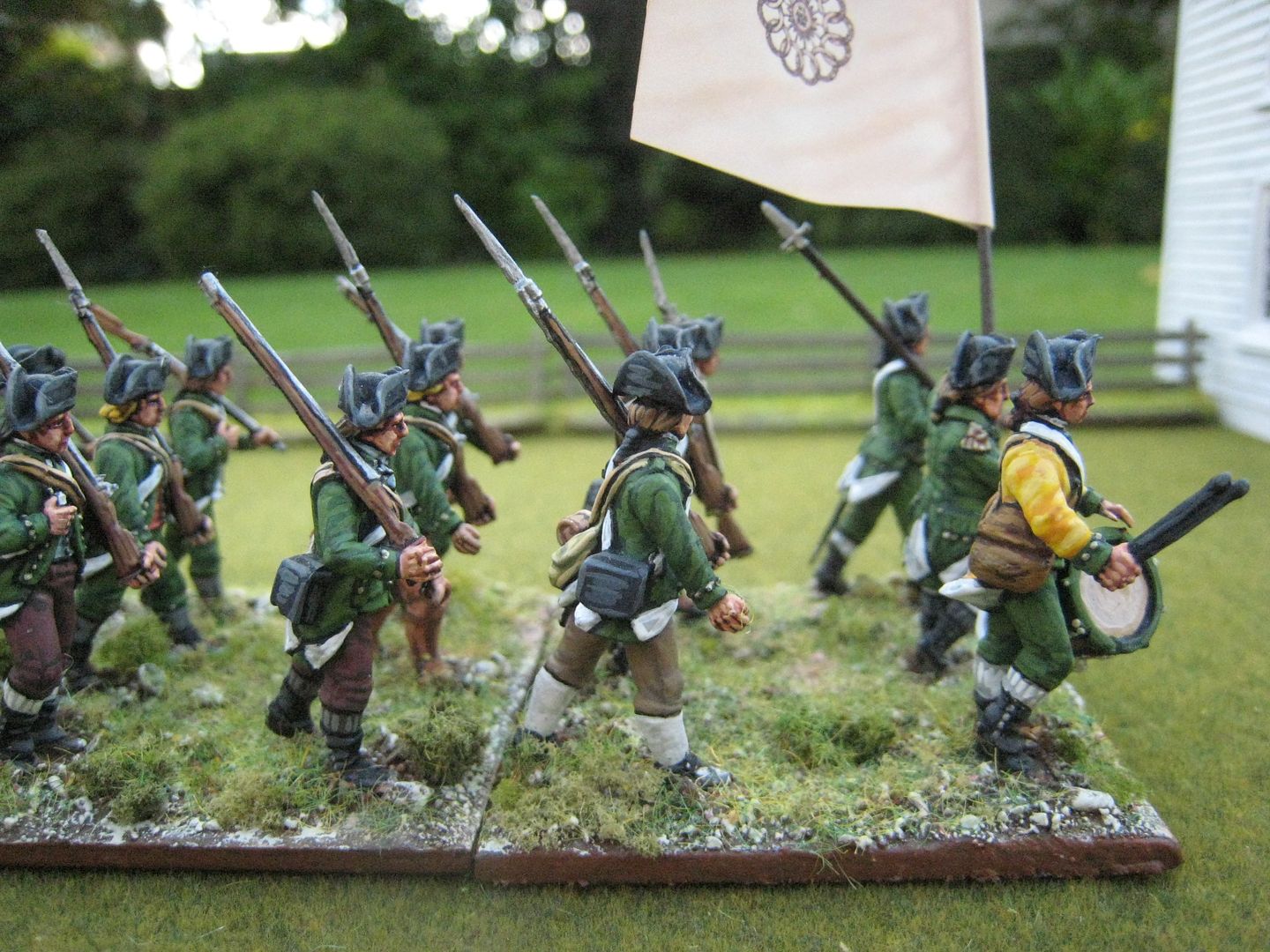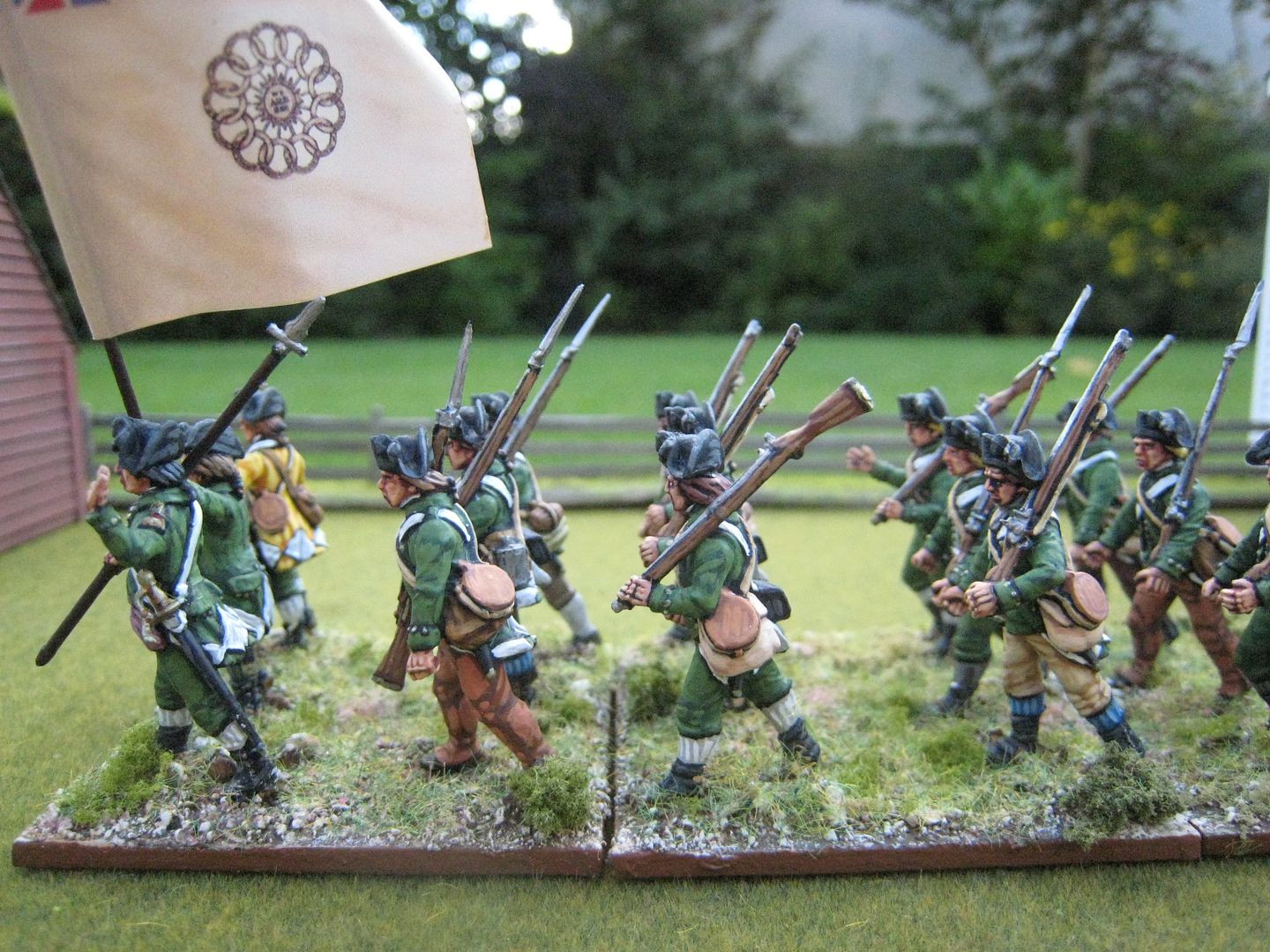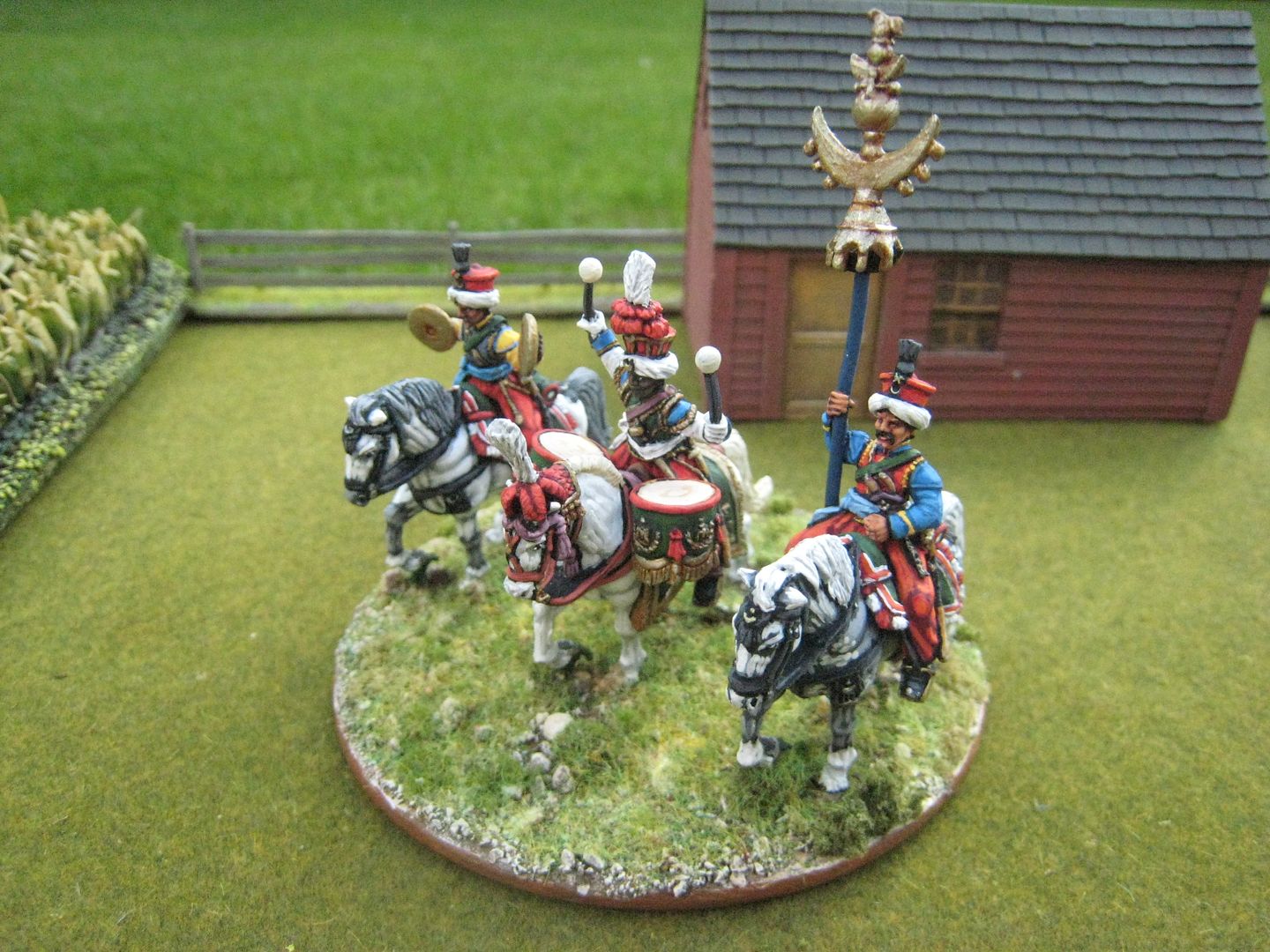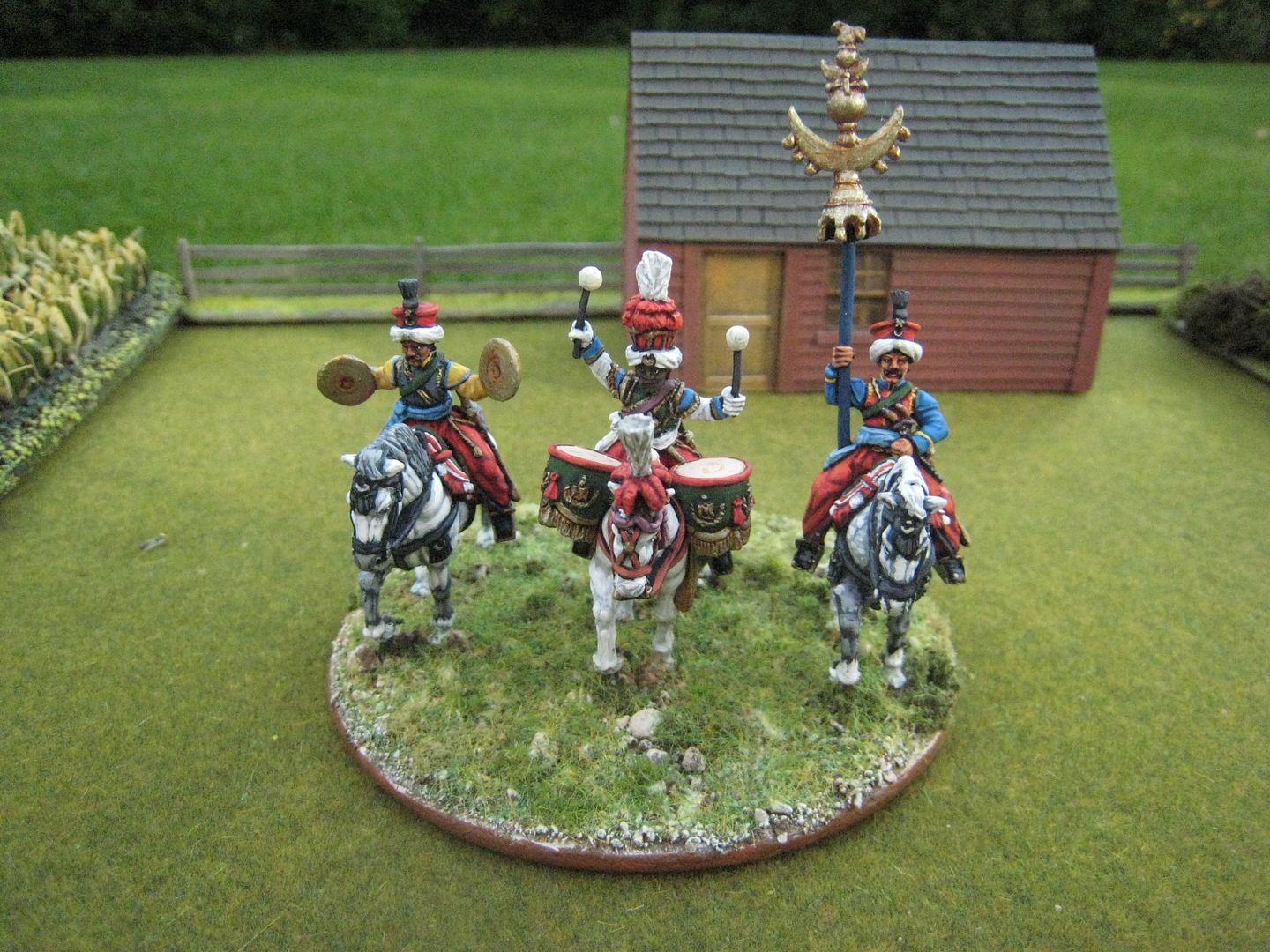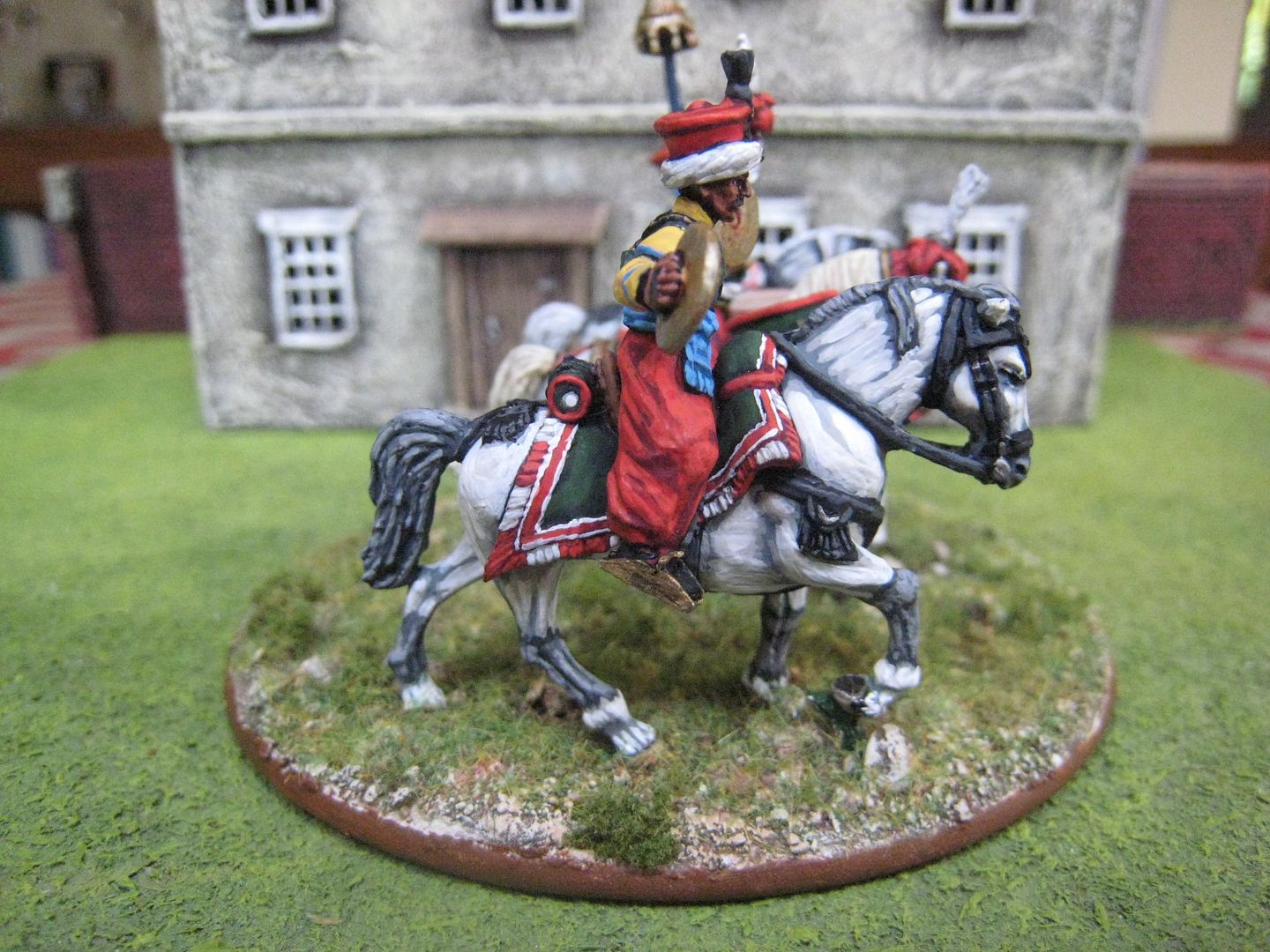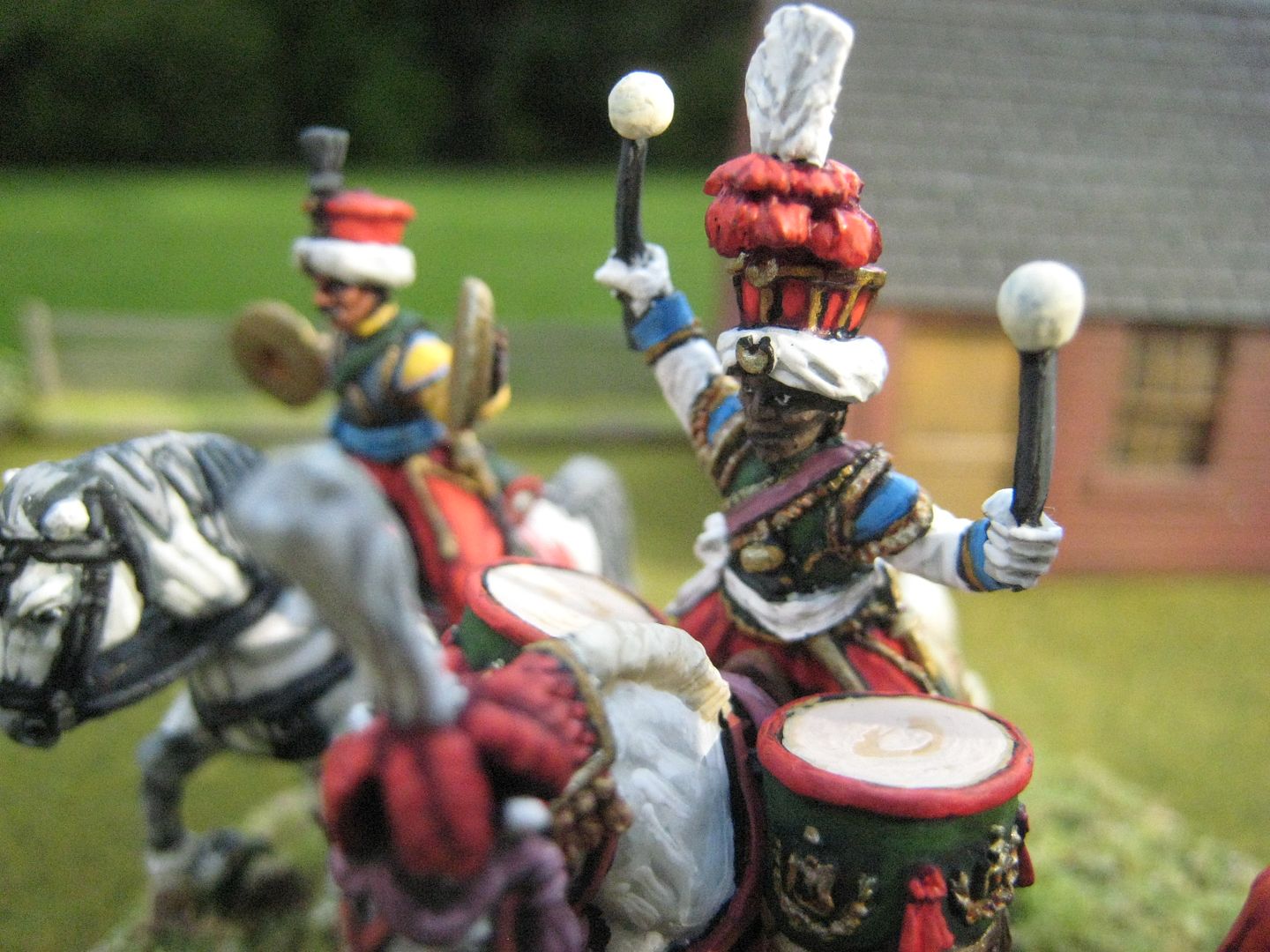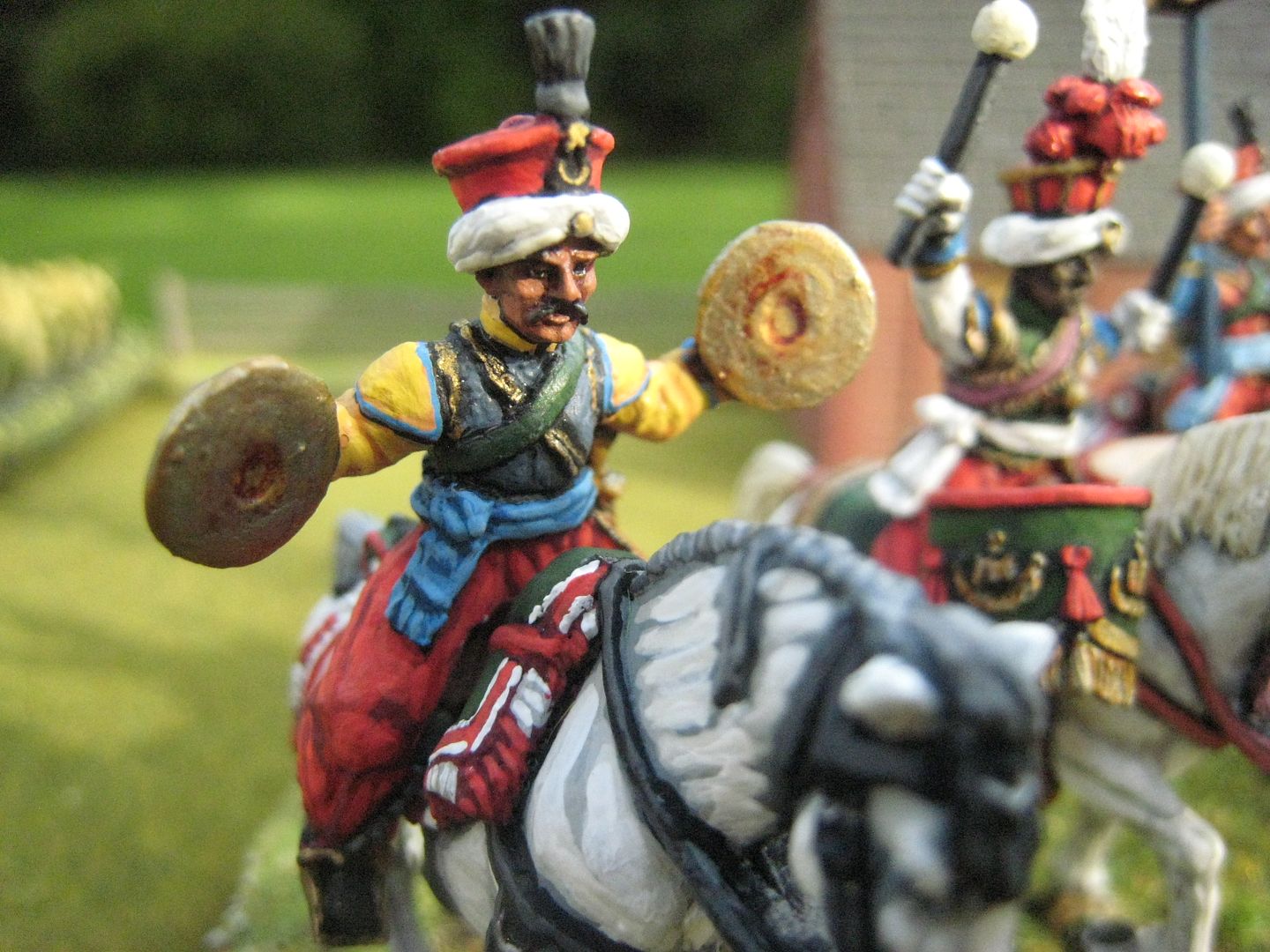There are 5 regiments represented here, differentiated by the colour of their facings: Armagnac (light blue), Viennois (grey), Auxerrois (black), Gatinais (violet) and Royal Deux-Ponts (blue faced yellow). I chose the Royal Deux-Ponts because I wanted a non-white uniformed regiment and I hadn't painted these guys before; I almost decided on the Dillon regiment instead, which I painted a while ago. I like how with French combined units of chasseurs and grenadiers you can have very colourful mixes of troops - it's not all about white coats. The way I painted the white coats is the same as with previous French infantry: undercoat with Army Painter "Uniform Grey" spray (an almost exact match with Coat d'arms "Uniform Grey 525" which I use for touching up); then first highlight of Foundry "Arctic Grey 33A"; second highlight of Coat d'arms "Light Grey 211"; third highlight of Coat d'arms "Tank Light Grey 526"; then finally pure white (any brand that is to hand). I like the shading and highlighting effects that this combination produce, although I appreciate the "look" won't be to all tastes. I think the chasseurs are supposed to have hunting horns on their coat turnbacks - I did these for the earlier figures that I painted, but forgot on the later ones.
In terms of French chasseurs in the "British Grenadier!" scenarios, the position is somewhat complex. The chasseur and grenadier companies of French infantry regiments did not operate in formal combined battalions like their British counterparts, but seem to have been thrown together in ad hoc units as the need arose. For Savannah, you have 3 units of 6, 8, and 10 figures. So that's 24 in total, and you can re-arrange into different sized units if you wish. For La Vigie, you have 1 unit of 18 figures. The storming of the redoubts at Yorktown has 3 units of combined chasseurs and grenadiers from 3 parent regiments (Royal Deux Ponts, Soissonais and Gatinois), each of 18 figures. What I'll do for Yorktown is to use these chasseurs here as 1 of those units and then paint up 36 charging Perry figures, mainly grenadiers but with a base of chasseurs thrown in. You need lots of grenadiers for Savannah (24 in fact), so they are next on the French list.
28 figures. Painted August 2011 and August 2015.
The chasseurs with their 2 officers and 8 skirmishers
If you want to know what this photo is all about, you'll need to buy the 4th AWI/"British Grenadier!" scenario book from Caliver - out now!


